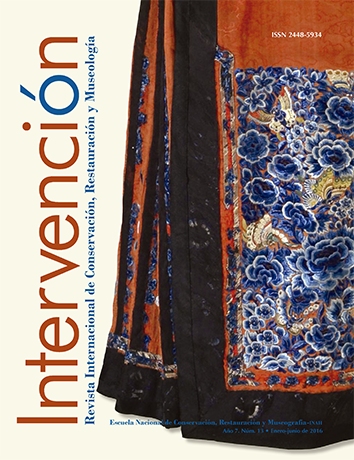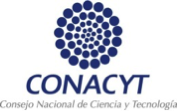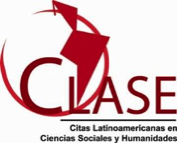Weathering effects of an historic building in San Francisco de Campeche, Mexico
DOI:
https://doi.org/10.30763/Intervencion.2016.13.153Keywords:
historical building, weathering, humidity, San Francisco de Campeche, MéxicoAbstract
This research presents a qualitative description of the degradation phenomena that occurred in external walls of the San Carlos Bastion, San Francisco de Campeche, Campeche City, (Mexico), a military structure built with calcareous materials between 16th and 17th centuries. Several weathering structures were identified in mortars and limestone. Scanning Electron Microscopy coupled to Energy Dispersive (sem/eds), X-Ray Diffraction (XRD) and Optical Microscopy (OM) analysis were carried out in order to identify the nature of the weathering compounds. These include: carbonate crusts (CaCO3), as well as neomineral phases (e.g. whewellite [CaC2O4.H2O] and weddellite [CaC2O42H2O]) related to microbial activity. Results indicate that the tropical climate induces physical, chemical and biological effects in the building materials, due mainly to high relative humidity. The influence of relative humidity appears to be the cause that damage the building, more than the action of sea salts and atmospheric pollutants. Furthermore, the presence of elements, such as chlorine, sodium and sulfur indicate that weathering occurred through synergistic processes during long-time exposure to the tropical environment of San Francisco de Campeche.
Downloads
References
Allen, Michael, Scott Fedick & Juan Jiménez Osornio (2003). The Lowland Maya Area. Three Milennia at the Human-windland Interfase, New York, cr Press, 115-138.
Amoroso, Giovanni & Fassina Vasco (1983). “Stone decay and conservation: Atmospheric pollution, cleaning, consolidation and protection”, Material Science Monographs Serie, 11, Amsterdam, London and New York, isbn [00444421467].
Ariño, Xavier, J. Ortega Calvo, A. Gomez-Bolea & C. Saiz-Jimenez (1995). “Lichen colonization of the roman pavement at Baelo Claudia (Cadiz, Spain): biodeterioration vs. bioprotection”, Science of the Total Environment, 167:353-363.
Arocena, Joselito, Tariq Siddique, Ronald Thiring & Selim Kapur (2007). “Investigation of lichens using molecular techniques and associated mineral accumulations on a basaltic flow in a Mediterranean environment”, Catena 70 (3):356-365.
Baedecker O. A. & M. M. Reddy (1992). “Effects of acidic deposition on the erosion of carbonate stone-experimental results from the u.s. National Acid Precipitation Assessment Program (napap)”, Atmospheric Environment, Part B. Urban Atmosphere Journal, 26 (II):147-158.
Bityukova, Lidia (2005). “Air Pollution Effect on the Decay of Carbonate Building Stones in Old Town of Tallinn”, Water, Air & Soil Pollution. An International Journal of Environmental Pollution, 172 (I):239-271.
Bravo, Humberto, A. R. Soto, R. M. I. Saavedra, J. R. Torres, M. L. M. Granada & P.A. Sánchez (1998). “Acid Rain in Mexico. Case: Maya monuments”, Air Pollution VI (Advances in Air Pollution), Transactions on Ecology and the Environment, 21:661-674.
Bravo, Humberto., R. Soto R., R. Sosa R., P. Sánchez, A. Alarcón, J. Kahl J. & J. Ruiz (2006). “Effect of acid rain on building material of the El Tajín archaeological zone in Veracruz, Mexico”, Environment Pollution, 144:655-660.
Cardell C., F. Delaieoux, K. Roumpopoulu, A. Moropoulo, F. Auger F. & R. Van Grieken (2003). “Salt Induced decay in calcareous stones monuments and buildings in a marine environment in sw France”, Construction and Building Materials, 17 (3):165-170.
Cook D. C., A. C. Van Order, J. Reyes, R. Balasubramania, J. J. Carpio & H.E. Towsend (2000). “Atmospheric corrosion in marine environments along the Gulf of México”, in S. W. Dean, G. Hernández-Duque Delgadillo & J. B. Bushman (eds.), Marine Corrosion in Tropical Environment, astm stp 1399:75-97.
Corvo, Francisco, T. Pérez, L. R. Dzib, Y. Martin, A. Castañeda, E. González & J. Pérez (2007). “Outdoor–indoor corrosion of metals in tropical coastal atmospheres”, Corrosion Science, 50 (I):220-230.
Corvo. Francisco, T. Pérez, J. Reyes, L. Dzib, J. González-Sánchez J. & C. Castañeda (2009). ”Corrosion and degradation of infrastructure in Yucatan Peninsula”, in J. González-Sánchez, F. Corvo & N. Acuña-González (eds.), Environmental Degradation of Infrastructure and Cultural Heritage in Coastal Tropical Climate, Campeche, Transworld Research Network, 1-34, isbn [978-81-7895-426-4].
Corvo, Francisco, J. Reyes, C. Valdes, F. Villaseñor, O. Cuesta O, D. Aguilar D. & P. Quintana P. (2010). “Influence of Air Pollution and Humidity on Limestone Materials Degradation in Historical Buildings Located in Cities Under Tropical Coastal Climates, Water, Air & Soil Pollut, 205:359-375.
Del Monte M. & C. Sabbioni (1986). “Chemical and biological weathering of an historical building: Reggio Emilia Cathedral”, The Science of the Total Environment, 50:165-182.
Diakumanku E., A. A. Gorbushina, W. E.Krumbein, L. Panina L. & S. Soukharjevski (1995). “Black fungi in marble and limestones —an aesthetical, chemical and physical problem for the conservation of monuments—”, Science of the Total Environment, 167:295-304.
Duch-Gary, Jorge (1991). Fisiografía del Estado de Yucatan, México, Universidad Autónoma de Yucatán.
Gaines R. V., H. C. W Skinner, E. E. Foord, B. Mason & A. Rosenzweig (1997). Dana’s New Mineralogy, New York, Willy-Interscience.
Gehrmann C. K., W. E Krumbein & K. Petersen (1992) “Endolithic lichens and the corrosion of carbonate rocks. A study of biopitting”, International Journal of Mycology and Lichenology, 5:37-48.
Ghedini, Nadia, C. Sabbioni, A. Bonazza & C. C. Gobbi (2006). “Chemical−Thermal Quantitative Methodology for Carbon Speciation in Damage Layers on Building Surfaces”, Environmental Science Technology, 40 (III):939-944.
Kouzeli K., N. Beloyiannis, C. Tolias & Y. Dogani (1989). “Monochromatic layers with or without oxalates on
the Parthenon”, in V.V. A.A. Proceedings of the International Symposium on the Oxalate Films: Origin and Significance in the Conservation of Works of art, Milán, Centro cnr Gino Bozza, 327-336.
Lopez-Arce P., J. Garcia-Guinea, D. Benavente, L. Torno L. & E. Doehne (2009) “Deterioration of dolostone by magnesium sulphate salt: An example of incompatible building materials at Bonaval Monastery, Spain”, Construction and Building Materials, 23:46-855.
Magnelli C., M. Camaiti , G. Borselli & P. Maravalaki (1989). “Variazione del grado di idrata del´ossalato di calcio in funzione delle condizioni termoigrometriche“, in V.V. A.A. Proceedings of the International Symposium on the Oxalate Films: Origin and Significance in the Conservation of Works of Art, Milan, Centro cnr Gino Bozza, 91.
Maravelaki-Kalaitzaki, P. (2005). “Black crusts and patinas on Pentelic marble from the Parthenon and Erechtheum (Acropolis, Athens): characteri¬zation and origin”, Analytica Chimica Acta 532 (II):187-198.
Maravelaki-Kalaitzaki P. & G. Biscontin (1999). “Origin, characteristics and morphology of weathe¬ring crusts on Istria stone in Venice”, Atmosferic Environ¬ment, 33 (II):1699-1709.
Montana G., L. Randazzo, I. A. Oddo & M Valenza (2008). “The growth of ‘black crusts’ on calcareous building stones in Palermo (Sicily): a first appraisal of anthropoge¬nic and natural sulphur sources”, Environmental Geology, 56:367-280.
Newby P. T., T. A. Mansfield & R. S. Hamilton (1991). “Sources and economic implications of building soiling in urban areas”, Science of the Total Environment, 100:347-365.
PCA (2015). Cement & Concrete Basics, Portland Cement Associa¬tion (pca), electronic document available at [http://www. cement.org/cement-concrete-basics], consulted in Novem¬ber 2015.
Pérez T., P. Castro & J. Genescá (2006). “Influence of meteorological parameters over the chloride ingress to concrete exposed to marine environ¬ment”, in Actas del II del Congreso Nacional alconpat, México, alconpat , isbn [968-9031-14-7].
Perry, Eugene, Guadalupe Velazquez-Oliman & Richard Socki (2003). “Hydrogeology of the Yucatán Peninsula”, in A. Gó¬mez Pompa, M. F. Allen, S. L. Fedick & J. J. Jiménez-Osor-nio (eds.), The Lowland Maya Area: Three Millennia at the Human-Wildland , New York, Interface Haworth Press, 38- 115.
Pettijohn, Frederick (1957). Sedimentary Rocks, New York, Harper & Brothers.
Polikreti K. & Y. Manatis (2003). “Micromorphology, composition and origin of the or¬ange patina on the marble surfaces of Propylaea (Acropolis, Athens)”, Science of Total Environment, 308:111-119.
Prieto Lamas B., Rivas M. T. & Silva Hermo B. M. (1995). “Colonization by lichens of granite churches in Gali¬cia (northwest Spain)”, Science of the Total Environment, 167:343-351.
Reyes J., Hermosin B. & Saiz-Jimenez C. (2004). “Organic analysis of aerosoles in Sevilla”, in Saiz- Jimenez C. (ed.), Air pollution and cultural heritage, Taylor and Francis Group, London, 15-20, isbn [9058096823].
Reyes J., Torres F., M. Miss, F Corvo, H Bravo, P. Bartolo & J. A. Azamar (2009). “Effect of the environment on the degradation of Co¬lonial and Prehispanic buildings in Campeche, Mexico”, in V.V.A.A. (eds.) Environmental Degradation of Infrastructure and Cultural Heritage in Coastal Tropical Climate, Méxi¬co, Transworld Research Network, 115-142, isbn [978-81- 7895-426-4].
Samaouali A., L Laanab, M. Boukalouch & Y. Geraud (2010). “Porosity and mineralogy evolution during the decay process involved in the Chellah monument stones”, Environmental Earth Sciencies, 59:1171-1181.
Schiavon N., G. Chiavari & D. Fabbri (2004) “Soiling of limestone in an urban environment characterized by heavy vehicular exhaust emissions”, Environmental Geology, 46:448-455.
Saiz Jimenez, Cesareo (ed.) (2004). Air pollution and cultural heritage, London, Taylor and Francis Group, 127-132.
Theoulakis P. & A. Moropoulou (1999). “Salt Crystal Growth as Weathering Mechanism of Porous Stone on Historic Masonry”, Journal of Porous Materials, 6 (IV):345-358.
Toniolo L., C. M. Zerbi & R. Bugini (2009). “Black layers on historical architecture”, Environment, Science, and Pollution Research, 16:218-226.
Torres F. (2009). “Rain Effects on stony materials from the State of Campeche Cultural Heritage”. M. Sc. Thesis, Autonomous University of Campeche, San Francisco de Campeche, Mexico.
Turner, F. J. (1968). Metamorphic Petrology, Nueva York, McGraw-Hill Book Co.
Van T. T., Beck K. & Al-Mukhtar M. (2007). “Accelerated weathering tests on two highly porous limestones”, Enviromental Geology, 52:283-292.
Webb, A. H., R. J. Bawden, A. K. Busby & J. N. Hopkins (1992). “Studies on the effects of air pollution on limestone degradation in Great Britain”, Atmospheric Environment, Part B, Urban Atmosphere, 26 (II):165-181.
Videla H. & L. K. Herrera (2004). “Deterioration of Three Churches of the Latin American Cultural Heritage. A Comparative study of weathering effects in different urban envoroments”, in Saiz-Jimenez C. (ed.), Air pollution and cultural heritage, London, Taylor and Francis Group, 15-20, isbn [9058096823].
Zappia, Giovanni, Cristina Sabbioni Riontino C., Gobbi G. & Favoni O. (1998) “Exposure tests of building materials in urban atmosphere”, Science of Total Environment, 224:235-244.
Additional Files
Published
How to Cite
Issue
Section
License
Copyright (c) 2016 INAH, National Institute of Anthropology and History

This work is licensed under a Creative Commons Attribution-NonCommercial 4.0 International License.

Atribución-NoComercial 4.0 Internacional
https://creativecommons.org/licenses/by-nc/4.0/deed.es
Usted es libre de:
- Compartir — copiar y redistribuir el material en cualquier medio o formato
- Adaptar — remezclar, transformar y construir a partir del material
Bajo los siguientes términos:
-
Atribución — Usted debe dar crédito de manera adecuada, brindar un enlace a la licencia, e indicar si se han realizado cambios. Puede hacerlo en cualquier forma razonable, pero no de forma tal que sugiera que usted o su uso tienen el apoyo de la licenciante.
-
No Comercial — Usted no puede hacer uso del material con propósitos comerciales.




















